What you need to know about grow lighting.
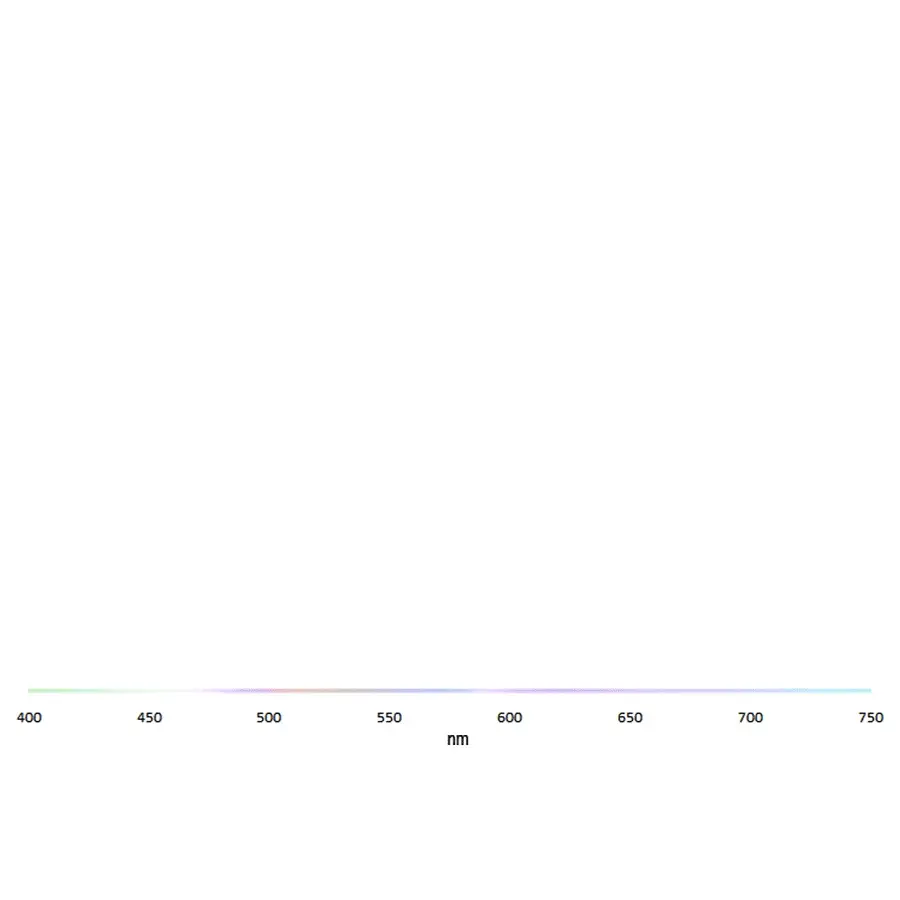
The spectrum
...not only determines the effectivity of light, but it also provides crucial information to your plants.

The intensity
...is also a crucial factor. Too much will stress your plant, but too little will lead to a lack of productivity.

The timing
...of different spectra and intensities, along with changing lighting durations, has great impact, too.
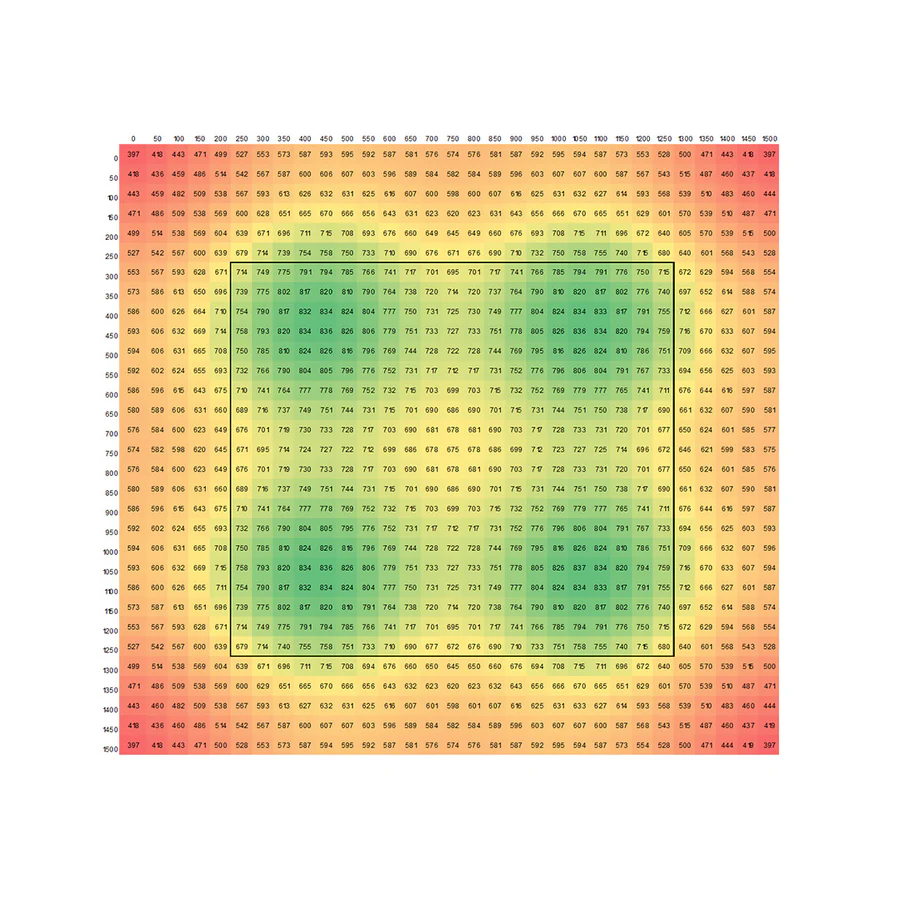
The distribution
...of light determines how much energy and information every plant receives. Even distribution = equal performance.

What you need to know about grow lighting.
Primarily, light is the main source of energy for plants. Natural sunlight consists of different colors, just think about the rainbow. Those colors reflect different wavelength ranges, which are visualized in charts (see picture). Plants can utilize light from 280nm (UVB) to 800nm (NIR), but not with the same efficiency. The first scientists who researched how efficient plants can utilize different wavelengths were McCree in 1972 and Inada in 1976. In 1999 Tazawa updated this research by establishing an average photosynthesis action spectrum (see dotted line in the picture) with data from 61 different species. Based on this, what should be considered?
1. Plants use the full visible light spectrum for photosynthesis. Red light is most efficient, but green and yellow light are also important, especially in deeper layers of the leaf and canopy.
2. Different species and strains have different action spectra. For optimal results a grow light spectrum should be designed for the species or be fully tunable.
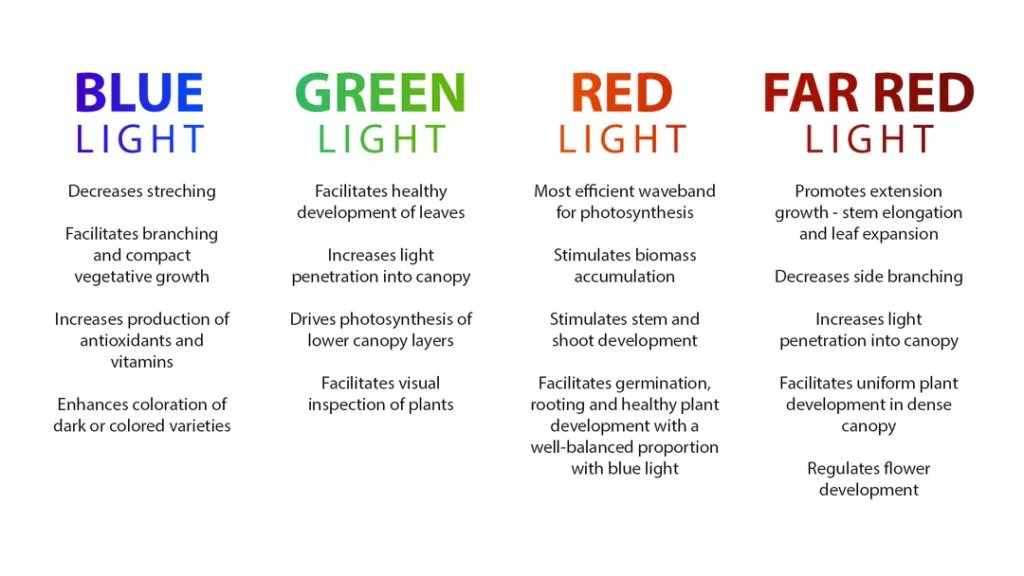
The spectrum - photomorphogenesis
Light is more than just a source of energy for plants. Over 100 genes and 26 biochemical pathways are regulated by light. As of now, researchers know of 5 families of photoreceptors, including at least 12 receptors. As plants are obviously stationary, they developed the ability to interpret the spectral composition of light to gain information about their surroundings. For example, plants in lower layers of the canopy can detect their relative position to other plants based on the red to farred ratio and start to elongate stems. This is called a shade avoidance reaction. Besides the impact of light and spectrum on plant and leaf architecture, the spectral composition can also impact flowering, plant immunity and defense, stress tolerance, or the production of phytoceuticals and other secondary metabolites. A good read to dig deeper into this topic is Mawphlang and Kharshiing 2017. What does that mean for growers?
1. Growers should be aware of the existence of those processes and, if possible, choose grow lights with a tunable spectrum.
2. At best, growers should start to dig deeper into this topic to facilitate those processes to optimize yields and crop quality.
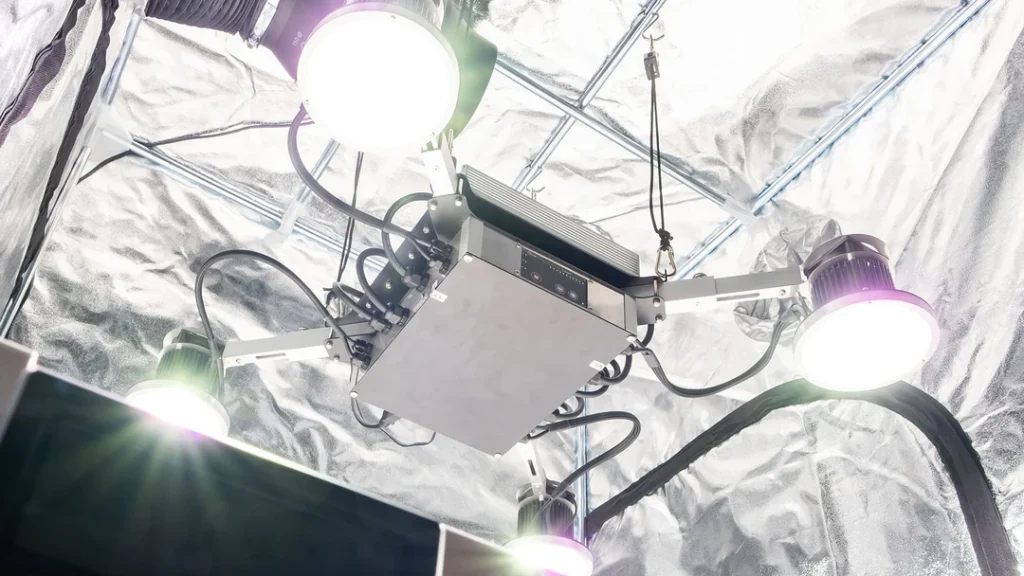
The intensity and the timing
In nature, the light intensity is not static. Just think about the daily and seasonal changes. Plants have adapted to those natural situations. Too much or too little intensity will lead to stress and/or lack of productivity. The following aspects should be considered:
1. In nature, light always changes intensity gradually, which is still widely disregarded in indoor gardening.
2. Sophisticated dimming strategies can help optimize yields, shorten growth cycles and increase the overall crop quality by reducing stress.
3. Dimming strategies should always be aligned with the optimization of other environmental parameters like CO2, temperature, etc.
Implementing a dimming strategy is the easiest way to increase yields, etc. To do so, it is important to have the ability to fine-tune the intensity and to set at least 6 switch points per day. Automation will be key.
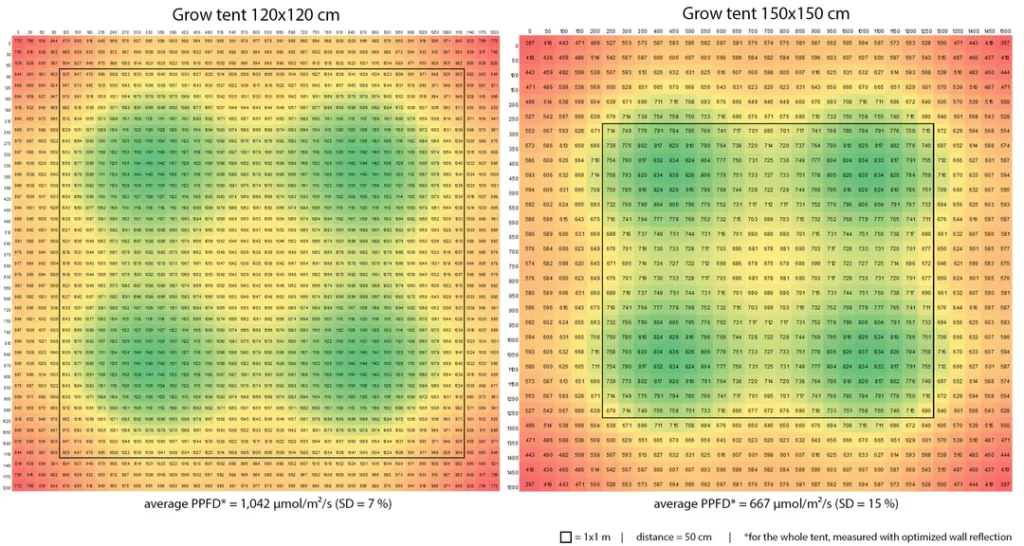
The light distribution
So far, we adressed the characteristics of the light. But even the best light composition and dimming strategy won’t work if the light doesn’t reach the plant. Light distribution is still widely underestimated. And even if it is considered, only a horizontal optimization has taken place in most cases. But plants are 3D-beings! The following aspects should be considered:
1. A homogeneous vertical light distribution will lead to higher yields, because of less competition and a more balanced performance of the plants.
2. Diffuse distribution increases the chance of light entering much deeper into the canopy and thereby enhances overall biomass production.
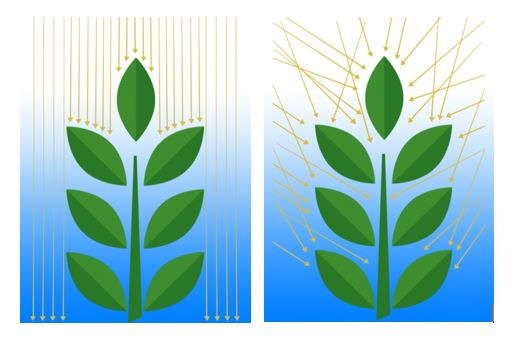
Reflection and diffuse light
The reflection of the walls must also be taken into account. It is essential that the reflective properties of the walls are known. We ensure this by using special reflective material.
Diffuse (non-directional) light increases the chance that the light will penetrate much deeper into the canopy, thus increasing overall biomass production.
It is therefore not advisable to use grow lights that have secondary optics (e.g., lenses) in order to direct the light as precisely as possible onto a target area. Although this approach helps grow light manufacturers to better map the light output onto the target area, it is by no means helpful for the effectiveness of the light.
It is also important that the lights are always positioned at a sufficient distance from the upper level of the plants. We recommend a minimum distance of 400 mm between the lower edge of the light and the upper level of the plants.